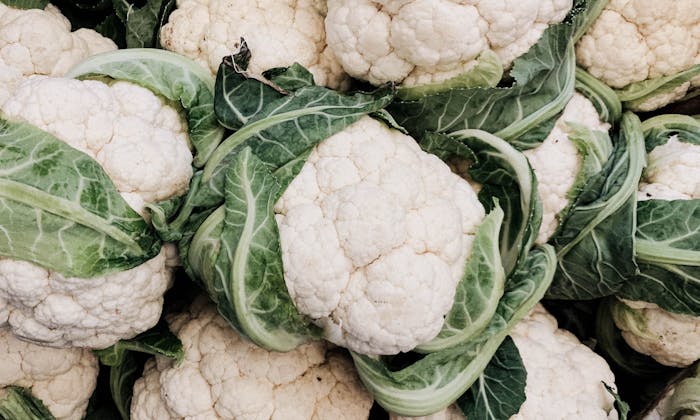Cauliflower is known to be a little tricker to grow than broccoli. Here's how to get the results you want from your cauliflower.
Cauliflower is a rewarding plant when it comes out right. It's great in stir-frys, or served as a nice, crisp cauliflower "steak."
It's also a rewarding plant to grow, as you watch for weeks as the white flower head, called a "curd," forms and grows.
History
Cauliflower is grown all over the world. You'll find it in African stews, Indian curries, and it's common in caseroles as well.
It shares a history with Broccoli, cabbage, bok-choi, brussels sprouts and the other cultivars of the species Brassica oleracea. Their use has been traced back as far as to Ancient Rome. And the original, wild cabbage, even further.
How to Grow Cauliflower
Cauliflower is most easily grown from seedlings. So it is best to either start it indoors or buy it as seedlings and transplant it into your garden.
Cauliflower likes a sandy, loose soil. It doesn't need an excess of nutrition. Too much nitrogen will encourage it to grow without flowering.
Ideally, cauliflower experiences warmth in the earlier days, which encourages growth. Then experiences a cooling of the weather. That will encourage it to form a nice, tight curd.
Cauliflower is known to be tricky, the important thing is to make sure it received consisten water. Stress will cause problems with the formation of the curd.
It's nice to have several cauliflowers through the season, but you don't want them to ripen all at once. Depending on how much your family will eat, it is best to sow a few every couple of weeks to space them out.
Blanching
If you want a nice, clean-looking, white cauliflower head, like the kind you would get in the grocery store, you may have to protect it from sunlight. Sunlight can cause cauliflower to yellow.
The way to get white cauliflower curds is by "blanching". Some varieties are made to be "self-blanching" so you don't have to do this. But that is not what you are growing, you should do this. Blanching is as simple as tying the leaves of the cauliflower plant over the curd in order to block the sun. You can do this with either a string or a rubber band.
Colorful varieties of cauliflower, orange, red, green or Romanesco, should not be blanched. They actually need the sunlight in order to develop their rich colors.
What Can Go Wrong?
Cauliflower is attractive to many types of bugs. Most of them are only a threat to the seedlings, like cabbage worms, flea beetles and cabbage looper and diamondback moth larvae.
Cauliflower is also very attractive to aphids. Aphids will not do any serious damage to your cauliflower, but they are very hard to remove after harvesting.
The best way to deal with aphids is to stay on top of the problem. If you notice aphids on your bassicas, spray them down with a high pressure hose. Nurseries often sell predatory ladybugs to get rid of them for you, but it's always hard to get them to stick around.
Harvesting
Cauliflower is ready to harvest when the head is about 6-8 iches in diameter. If the flowers of the curd start to open up, harvest immediately.
You won't get any extra cauliflower after harvest, the way you can get extra broccoli, so its best to cut it off at the base with a sharp knife and let the roots eventually break down in the soil.
I like to pull off the leaves and scatter them around my garden where they dry up and act as mulch, or chop them and up and throw them into the compost bin.

